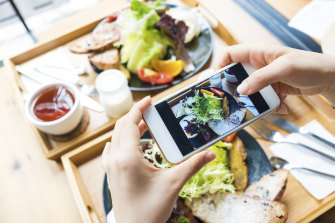How Instagram changed the way we shop
On October 6, 2010 – with the first year of the decade drawing to a close – the following headline appeared above a modest 445-word article on a tech-industry website: “Instagram Launches With the Hope of Igniting Communication Through Images.”

It’s an almost comically quaint description of exactly what the company has done over the past nine years. On its way to amassing more than a billion users, Instagram has become many things: a joyful storehouse of family photos, a sledgehammer for celebrity tabloid culture, a shadowy abyss of teen bullying. Oh, and it has also become the most powerful force in shaping commerce this side of Amazon.com.
The smartphone app has notably served as a platform for new forms of consumer marketing. But its influence on spending is far more profound. Because everyone now lives their lives on camera, Instagram has played a crucial role in altering both the look and nature of products people buy and the physical spaces where they shop.
Certain items were elevated to the must-have list this decade because they were shareable – that is, they photographed especially well or had a flair of whimsy that racked up the likes and comments.
Product designers and merchants have gotten wise to this dynamic and have responded in kind. They brought shoppers pool floats shaped like swans and floppy sun hats with cursive kiss-offs like “Do Not Disturb”. They served up eye-catching rainbow bagels, Unicorn Frappuccinos and latte art. They scored with kids’ games such as Pie Face that were perfect for video snippets.
“Bride Tribe” tank tops. Mermaid toast. “Live Laugh Love” wall art. It is doubtful any of these things would even exist if not for Instagram.
In some cases, whole product categories have benefited from the photo-centric world that Instagram has created. The beauty business had several booming years this decade, powered by trends such as contouring and strobing that made women feel duck-face-ready. Sales of houseplants skyrocketed as Millennials outfitted their homes with fiddle-leaf figs that lent an artful flourish to photos.
Meanwhile, restaurateurs have adapted the lighting in their dining rooms to be conducive to photos, knowing diners’ pictures are among their most powerful marketing tools. Splashy lettering, loud wallpaper, neon signs – these have become the default aesthetic of eateries looking to nab a spot in Instagram feeds.
Restaurants are just one component of the so-called “experience economy”, a broader category of consumer spending that has been utterly upended by Instagram. The holiday-photo arms race has led to certain picturesque landmarks being choked by visitors and public lands being degraded.
Perhaps Instagram’s most peculiar commercial influence has been its role in creating entirely new spending occasions, particularly around life milestones. Maternity photo shoots have become commonplace; so have birth and newborn photo shoots. Same for “Trash the dress” and home-buying photo shoots. Some of these rituals started becoming trendy before Instagram’s rise, but it is the app that has cemented them as an ordinary thing to drop hundreds (or thousands) of dollars on.
Relatedly, there now exists a weird species of consumer goods that no one needed before they revealed big news via a visual medium. Search Etsy for “pregnancy announcement props,” and you’ll find thousands of items: chalkboard-style signs, dummies and dog outfits emblazoned with baby announcements. You’ll find similar props to herald engagements, gender reveals and birthdays by photo.
All of this is before contemplating what an essential tool Instagram has become for brand advertising. So-called influencers – a class that includes both Hollywood actresses and suburban mums with fewer than 10,000 followers – have perfected the art of hawking everything from fashion, to protein drinks, to tampons, to credit-card rewards programs to their audiences in exchange for fees or free gear.
What Instagram did is change consumer culture. It turned shoppers into a performative swarm of shutterbugs presenting Clarendon-filtered (or maybe Juno-filtered?) versions of themselves and their surroundings to their followers. It changed not only how things are bought and sold, but why.
When period-piece movies are someday made about the 2010s, the aesthetics used to evoke this decade – all-white kitchens, neon-coloured foods, major sleeves – will be the ones that sparkled in Instagram’s on-screen world.
Real life never looked quite so glossy.
Bloomberg
Most Viewed in Business
Source: Thanks smh.com